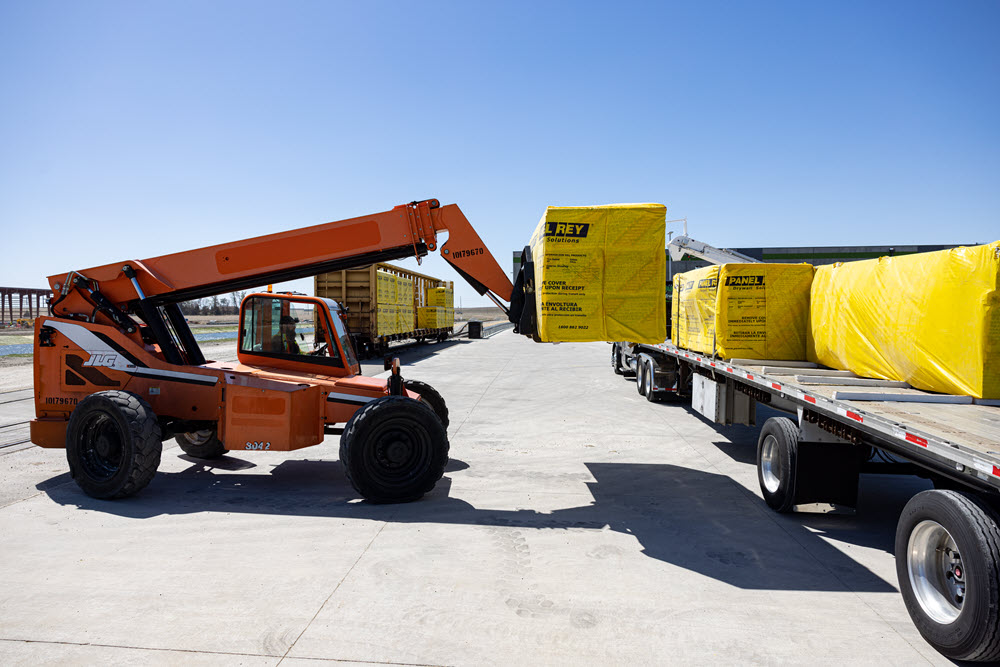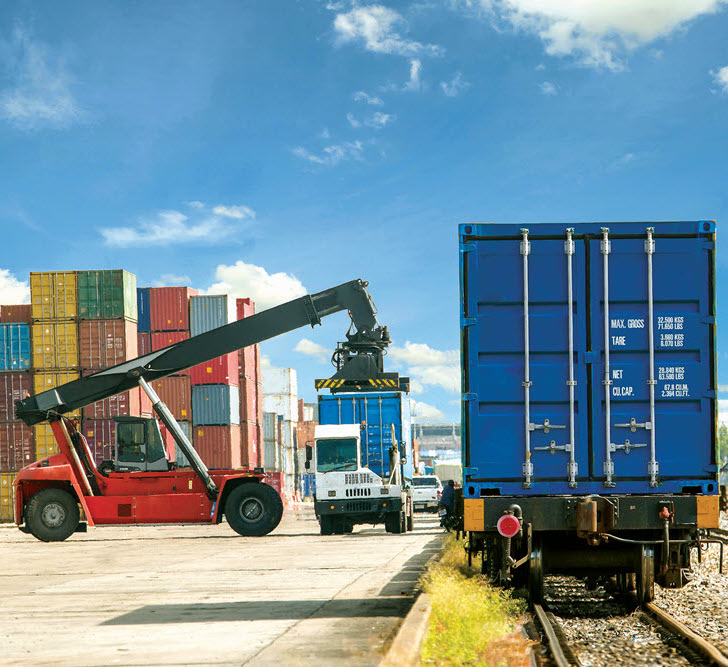Transloading—also known as freight transfer—is the process of moving goods, cargo, or products from one mode of transportation to another, such as transferring shipments between trains, trucks, or ships. This typically involves unloading goods from one vehicle or container and loading them onto another at specialized transloading facilities.
These facilities may use cranes, forklifts, and other equipment to handle a variety of products and container types. Transloading helps optimize routes, reduces shipping costs, and ensures goods reach destinations that might not be directly served by a single transport mode.
What is transloading?
Transloading is essential for companies that need to coordinate the movement of freight across varied transport modes, facilities, and locations, enabling flexible supply chain operations and reliable delivery to final destinations. This transfer increases logistics efficiency and helps reduce overall shipping costs.
Connect with our expertsWhat is transloading?
Transloading is essential for companies that need to coordinate the movement of freight across varied transport modes, facilities, and locations, enabling flexible supply chain operations and reliable delivery to final destinations. This transfer increases logistics efficiency and helps reduce overall shipping costs.
Connect with our experts
How transloading works
Key steps in the transloading process
-
Receive goods at the transload facility (rail car, truck, ship, or container).
-
Unload cargo and inspect for handling or damage.
-
Store goods temporarily in a warehouse or staging area, if needed.
-
Reload products onto another transport mode (truck, train, ship, etc.).
-
Coordinate documentation and tracking for each shipment
-
Ship freight to the next point or final destination.
Where does transloading fit in your supply chain?
Transloading is a critical part of modern supply chains, connecting ports, railroads, trucking companies, and distribution centers. It provides flexible solutions for shippers moving freight between regions or across borders.
Transloading also helps optimize cargo movement when origin and destination points are not directly linked by a single mode of transport. Whether shipping products overseas or distributing freight across North America, transloading facilities support efficient delivery and reduce costs.

Benefits of transloading for shippers and customers
Transloading offers clear advantages, including:
- Access to a variety of shipping options.
- Reduced transit times.
- Lower logistics costs.
- Minimized risk of cargo damage through better handling and coordination.
It enables companies to use the best mode of transport for each part of the journey, adapt to disruptions, and manage shipments more efficiently from origin to destination.
By choosing the right transload facility and services, shippers gain flexibility and control throughout their supply chain operations.
Let’s talk about your freight needs
Have questions about transloading, freight transfer facilities, or optimizing your shipping options? Travero’s team is here to help. Reach out to connect with a logistics expert and see how our services can support your supply chain.
